The 1901 Morgan silver dollar is highly valued due to its rarity in high-grade condition. While Philadelphia Mint produced nearly 7 million coins, most were heavily circulated or melted under the 1918 Pittman Act, leaving few mint-state examples. The 1901-S (San Francisco) version had lower mintage but is less rare in high grades than Philadelphia issues. Key factors affecting rarity include heavy circulation after minting, mass melting during the Pittman Act, low survival rates in gem condition, and limited availability from Treasury releases in the 1950s-60s. Coins with “O” mint mark (New Orleans) are common in lower grades but scarce in uncirculated condition. No mint mark indicates Philadelphia origin, making these particularly valuable in pristine condition.
The 1901 Morgan silver dollar stands as one of the most intriguing paradoxes in American numismatics. While nearly 7 million were struck at the Philadelphia Mint alone, finding one in pristine condition today is remarkably difficult. The Pittman Act of 1918 sent millions to the melting pot, and heavy circulation wore down countless others. For collectors, this creates a fascinating opportunity where a common date becomes genuinely rare in higher grades, commanding prices that rival far scarcer issues.
Understanding the Three 1901 Morgan Dollar Varieties
The United States Mint produced Morgan dollars at three facilities in 1901, each creating coins with distinct characteristics and survival rates that dramatically affect their current market values.
The Philadelphia Mint struck 6,962,813 pieces without a mint mark, making it the highest mintage of the year. Despite these numbers, the vast majority entered immediate circulation or met their fate during the 1918 silver melting campaign. Today, specimens grading Mint State 65 or higher represent less than one percent of the original mintage. The New Orleans facility produced 13,320,000 coins marked with an “O” on the reverse below the wreath, while San Francisco contributed just 2,284,000 pieces bearing an “S” mint mark in the same location.
What makes these varieties particularly interesting is how their survival rates diverged from their original production numbers. The New Orleans issue, despite its massive mintage, became one of the most available Morgan dollars in uncirculated condition thanks to Treasury Department releases in the 1950s and 1960s. The San Francisco version faced heavy circulation but wasn’t melted in the same proportions as its Philadelphia counterpart. The Philadelphia strike suffered the worst fate, with both circulation wear and systematic melting reducing high-grade survivors to truly scarce levels.
Current Market Values Across All Grades
Understanding the value spectrum for 1901 Morgan dollars requires examining each variety across the full grading scale, as the price differences can be dramatic.
1901 Philadelphia (No Mint Mark) Value Chart:
| Grade | Current Value |
|---|---|
| Good-4 | $35-$45 |
| Fine-12 | $40-$50 |
| Extremely Fine-40 | $45-$60 |
| About Uncirculated-55 | $65-$85 |
| Mint State-60 | $120-$175 |
| Mint State-63 | $185-$275 |
| Mint State-64 | $425-$650 |
| Mint State-65 | $1,850-$3,200 |
| Mint State-66 | $8,500-$15,000 |
| Mint State-67 | $45,000-$75,000 |
The Philadelphia issue shows the most dramatic price escalation at higher grades. A Heritage Auctions sale in January 2023 realized $67,200 for an MS-67 example, while an MS-66 specimen brought $11,400 at the same venue in March 2023. The jump from MS-64 to MS-65 represents a 300-400% increase, reflecting the genuine scarcity at gem levels.
1901-O New Orleans Value Chart:
| Grade | Current Value |
|---|---|
| Good-4 | $32-$42 |
| Fine-12 | $38-$48 |
| Extremely Fine-40 | $42-$55 |
| About Uncirculated-55 | $48-$62 |
| Mint State-60 | $55-$72 |
| Mint State-63 | $68-$95 |
| Mint State-64 | $85-$125 |
| Mint State-65 | $285-$475 |
| Mint State-66 | $1,200-$2,400 |
| Mint State-67 | $12,500-$22,000 |
The New Orleans variety remains affordable through MS-64, making it an excellent choice for collectors seeking a high-quality 1901 Morgan without breaking the bank. Stack’s Bowers sold an MS-66 example for $1,680 in August 2023, demonstrating stable demand at premium uncirculated levels.
1901-S San Francisco Value Chart:
| Grade | Current Value |
|---|---|
| Good-4 | $38-$50 |
| Fine-12 | $45-$58 |
| Extremely Fine-40 | $60-$85 |
| About Uncirculated-55 | $95-$145 |
| Mint State-60 | $185-$275 |
| Mint State-63 | $425-$625 |
| Mint State-64 | $1,100-$1,800 |
| Mint State-65 | $3,500-$5,800 |
| Mint State-66 | $18,000-$32,000 |
| Mint State-67 | $125,000-$195,000 |
The San Francisco issue occupies middle ground between its siblings, with values that reflect moderate scarcity across all grades. A PCGS MS-65 specimen sold for $4,800 at Legend Auctions in November 2023, while an exceptional MS-67 brought $156,000 at Heritage in April 2023.
Error Varieties and Premium Specimens
Beyond mint marks, several die varieties and errors command significant premiums among specialized collectors who pursue these fascinating anomalies.
The 1901 Doubled Die Obverse variety shows dramatic doubling on the letters of “LIBERTY” within the headband, visible without magnification on well-struck examples. PCGS has certified only 47 specimens across all grades as of 2024, with MS-63 examples trading between $1,200 and $1,850. An MS-64 specimen sold for $2,640 at Great Collections in September 2023.
The 1901-O Micro O variety features a smaller “O” mint mark, measuring approximately 1.5mm compared to the standard 2mm size. This scarce variety adds 40-60% premium in Mint State grades, with MS-64 examples reaching $185-$225 compared to $85-$125 for standard strikes. Authentication by major grading services is essential, as the size difference requires precise measurement.
Repunched mint mark varieties exist for both the New Orleans and San Francisco issues. The 1901-O RPM-1 shows clear doubling below and to the left of the primary mint mark, adding 25-35% premium in grades above Extremely Fine. An AU-58 example brought $98 at GreatCollections in February 2024, compared to $48-$62 for standard issues.
Die cracks and cuds represent striking errors that occurred when dies developed fractures. A 1901 Philadelphia dollar with a major die cud through the date sold for $385 in MS-62 at Heritage in December 2023, triple the value of a problem-free specimen at the same grade level. Smaller die cracks typically add 10-20% premium depending on their prominence and location.
Lamination errors, where the planchet’s metal surface partially separates, are documented but extremely rare for 1901 strikes. A 1901-O with significant obverse lamination graded AU-53 realized $425 at Stack’s Bowers in June 2023.
Professional Grading and Authentication Strategies
Understanding third-party grading becomes crucial when 1901 Morgan dollars can range from $40 to $75,000 depending on condition and variety attribution.
The Professional Coin Grading Service and Numismatic Guaranty Company use the Sheldon Scale from 1 to 70, with Mint State beginning at MS-60. For 1901 issues, the difference between MS-64 and MS-65 represents not just a single point but often a tripling or quadrupling of value. The grading services examine luster quality, strike sharpness, contact marks, and eye appeal to assign their numerical grades.
Surface preservation matters enormously for these coins. Mint State examples should display full, unbroken cartwheel luster with minimal bagmarks. The Philadelphia issue particularly suffers from weak strikes at the eagle’s breast and the hair above Liberty’s ear, areas that graders scrutinize carefully. A fully struck specimen with strong feather detail commands 15-25% premiums over weakly struck coins at the same numerical grade.
Cleaned coins represent the most common problem affecting values. Historical cleaning with abrasive materials creates hairline scratches visible under magnification, resulting in “Details” grades that reduce values by 50-75%. A 1901 Philadelphia that would grade MS-63 if problem-free might receive an “AU Details – Cleaned” designation worth only $75-$95 instead of $185-$275.
Counterfeits targeting the scarce Philadelphia and San Francisco varieties have emerged from overseas sources since 2015. Diagnostic authentication involves checking weight (26.73 grams is correct), diameter (38.1mm), and reeding pattern (typically 177-185 reeds). Genuine 1901 Morgan dollars produce a distinctive ring when balanced on a finger and gently tapped, though this test should never replace professional authentication for valuable specimens.
The cost of professional grading ranges from $25 to $150 depending on service tier and declared value. For any 1901 Morgan dollar that appears to grade MS-64 or higher, particularly Philadelphia or San Francisco issues, the grading fee represents sound investment given the dramatic value differences between grades.
Building a Complete 1901 Set on Any Budget
Collectors can approach the 1901 Morgan dollar series with strategies matching budgets from $200 to $20,000, each offering rewarding challenges and acquisition opportunities.
The economy approach focuses on circulated examples across all three mints. A Good-4 to Very Fine-30 three-coin set costs approximately $125-$175, providing affordable exposure to each variety. This strategy works well for collectors building complete Morgan dollar date sets where every year from 1878 to 1921 appears in similar circulated grades. Target coins with original gray toning and minimal problems, avoiding cleaned or damaged specimens even at budget levels.
The mid-grade strategy targets About Uncirculated to lower Mint State specimens. A three-coin set in AU-55 to MS-62 runs $400-$650, offering nearly full detail and significant luster while avoiding the exponential price increases at gem levels. The 1901-O provides the best value here, as MS-63 examples with strong eye appeal sell for just $68-$95. Pair this with an AU-58 Philadelphia piece at $65-$85 and an AU-55 San Francisco at $95-$145 for a visually impressive set under $400.
The premium strategy pursues MS-64 to MS-65 quality for each variety, creating a set valued at $5,500-$9,500. At these grades, you acquire coins that represent the top 2-3% of surviving examples, with full blazing luster and minimal contact marks. The challenge lies in finding properly graded specimens with strong eye appeal, as not all MS-64 or MS-65 coins look equally attractive. Attend major coin shows or work with established dealers who offer return privileges, allowing direct examination before final purchase.
The variety specialist approach targets error coins and die varieties alongside the standard strikes. Budget $3,000-$5,000 to acquire a standard three-coin set in MS-63 ($700-$1,000), plus representative examples of the Doubled Die Obverse ($1,200-$1,850), Micro O variety ($185-$225), and at least two repunched mint mark varieties ($75-$150 each). This strategy builds a comprehensive collection showing the full range of 1901 production characteristics.
Timing purchases strategically can save 15-25% compared to retail pricing. Major auction houses like Heritage, Stack’s Bowers, and GreatCollections conduct weekly internet sales where 1901 Morgan dollars regularly appear. Bidding typically runs softer during summer months (June-August) and the December holiday period, while January and spring shows see increased competition driving prices upward.
Investment Potential and Market Trends
The 1901 Morgan dollar market has demonstrated consistent strength over the past two decades, with certain varieties outperforming broader precious metals trends.
Silver content alone provides a floor value, as each coin contains 0.77344 troy ounces of pure silver. At $24 per ounce silver, the melt value reaches approximately $18.50, though no rational collector would destroy these coins for metal content given their numismatic premiums. This silver backing does provide downside protection that rare coins lacking precious metal content cannot match.
The Philadelphia issue in MS-65 or better represents the strongest long-term performer. Tracking auction records from 2010 to 2024 shows MS-65 examples appreciating from $1,200-$1,500 to current levels of $1,850-$3,200, representing 60-115% growth. MS-66 specimens jumped from $4,500-$6,000 to $8,500-$15,000, a 90-150% increase. These gains significantly outpaced inflation and silver price movements during the same period.
The certified population reports reveal why Philadelphia gems continue strengthening. PCGS and NGC combined have graded only 423 specimens as MS-65, with just 87 achieving MS-66, and a mere 11 reaching MS-67 as of March 2024. Compare this to the 1901-O, where 3,247 MS-65 examples exist in holders. The Philadelphia scarcity at gem levels appears genuinely structural rather than temporarily constrained supply.
Market corrections have occurred, notably during the 2011-2015 precious metals downturn when all Morgan dollars softened 20-35%. However, 1901 Philadelphia pieces in MS-65 or better recovered within 18 months and continued climbing, demonstrating strong underlying collector demand independent of precious metals speculation.
The 1901-S in MS-64 or better shows emerging strength as collectors recognize it as the second-scarcest variety in high grades. Values remained relatively flat from 2010 to 2018, but MS-64 prices have climbed 35-50% since 2019, from $800-$1,200 to current $1,100-$1,800 levels. This variety may offer the best appreciation potential for collectors with $1,500-$2,000 budgets seeking coins that could narrow the value gap with scarcer dates.
The 1901-O serves better as an affordable set-filler than an investment vehicle, given the large certified population and readily available supply through MS-64. Prices have remained essentially stable for a decade, moving in lockstep with silver values but showing minimal numismatic premium growth.
Where to Find and Purchase 1901 Morgan Dollars Today
Acquiring these coins through proper channels ensures authenticity and fair pricing while providing recourse if problems emerge after purchase.
Major online auction platforms including Heritage Auctions, Stack’s Bowers, Great Collections, and Legend Auctions list hundreds of 1901 Morgan dollars monthly. Heritage alone typically offers 50-80 examples across all varieties in their weekly internet auctions, with extended listings showing images of both obverse and reverse plus detailed descriptions noting any problems. Buyer’s premiums run 15-20% on top of hammer prices, and you’ll compete against dealers and collectors worldwide, but the selection and price transparency are unmatched.
Local coin shops provide the advantage of physical examination before purchase, crucial for evaluating luster quality and eye appeal that photographs cannot fully capture. Expect to pay 10-20% more than auction prices, but you’re purchasing dealer expertise, return privileges, and the ability to build ongoing relationships for future acquisitions. Shops with Professional Numismatists Guild memberships adhere to strict ethical standards and typically guarantee authenticity.
Major coin shows including the American Numismatic Association World’s Fair of Money, Florida United Numismatists conventions, and the Whitman Baltimore Expo bring dozens of dealers offering Morgan dollars. Shopping shows allows side-by-side comparisons between multiple specimens at the same grade, helping you understand how much eye appeal varies within a grade category. Show pricing typically falls between retail shop and auction levels, and you can often negotiate 5-10% discounts when purchasing multiple coins.
Online dealer sites like APMEX, Modern Coin Mart, and JM Bullion stock 1901 Morgan dollars with fixed pricing slightly above auction levels but below traditional retail. These sources work well for common varieties in standard grades, though selection of premium quality specimens or scarce die varieties remains limited compared to auction venues.
Estate sales and local auctions occasionally produce 1901 Morgan dollars, sometimes at prices below market when auctioneers lack numismatic expertise. However, these venues carry higher risk of counterfeits, cleaned coins, or problem pieces going undetected. Only pursue this route if you possess sufficient knowledge to authenticate and grade coins yourself, or can bring them to professionals before bidding.
Preserving Your 1901 Morgan Dollars for Future Generations
Proper storage and handling directly impact whether your coins maintain their grades and values over the decades ahead.
Certified coins in PCGS or NGC holders require minimal additional protection beyond the sonically sealed slabs. Store these vertically in certified coin boxes designed with individual slots, preventing slabs from rubbing against each other. Maintain stable temperature and humidity, ideally 65-70°F with 40-50% relative humidity, avoiding basements prone to dampness or attics experiencing temperature extremes.
Raw coins demand more careful handling and storage. Always hold specimens by their edges, never touching obverse or reverse surfaces where fingerprints deposit oils and acids that cause spotting over time. For long-term storage, use inert holders made from Mylar, polyethylene, or other archival-quality materials. Avoid PVC-containing flips, which release chemicals that create green slime on silver surfaces within 5-10 years.
Bank safe deposit boxes provide excellent security but sometimes suffer from poor environmental control. If using this option, place coins in a sealed container with silica gel packets to control moisture, and inspect them annually for any developing problems. Home safes work well for smaller collections, particularly models with fire ratings protecting contents to 350°F for at least one hour.
Never clean Morgan dollars regardless of how dirty or toned they appear. Collectors and dealers prefer original surfaces even with toning or light dirt, while cleaning destroys the delicate microscopic flow lines from the minting process that graders use to verify authenticity and assess preservation quality. A cleaned coin drops from Mint State to “Details” grades, costing 50-75% of potential value.
Insurance becomes advisable once your 1901 Morgan collection exceeds $2,000-$3,000 in value. Homeowner’s policies typically provide minimal coverage for coins, often capped at $1,000-$2,000 regardless of actual value. Specialized collectibles insurance through companies like Hugh Wood Inc. or American Collectors Insurance costs approximately $1.50-$2.00 per $100 of coverage annually, with agreed-value policies that pay full insured amounts after losses rather than depreciated values.
Start Your 1901 Morgan Dollar Collection This Week
The 1901 Morgan dollar series offers something for every collector, from affordable circulated examples to world-class rarities that anchor advanced collections. Whether you’re purchasing your first silver dollar or adding the final piece to a complete Morgan set, understanding the dramatic differences between varieties and grades prevents costly mistakes while revealing where genuine opportunities exist. With proper authentication through PCGS or NGC, you can acquire these historic silver dollars confidently, knowing that their scarcity in high grades continues supporting strong values regardless of short-term market fluctuations. Check auction listings this week, visit local dealers with a specific grade target in mind, and join the thousands of collectors who’ve discovered why the 1901 Morgan dollar remains one of American numismatics’ most rewarding pursuits.
You may be interested:
- 1859 Indian Head Penny Coin Value Complete Errors List And No Mint Mark Worth Guide For Collectors
- 1911 V Nickel Coin Value Guide Complete Errors List And No Mint Mark Worth Today
- 1902 Dime Coin Value Complete Errors List With O S And No Mint Mark Worth Guide
- 1788 Quarter Coin Value Complete Guide Errors List And D S P Mint Mark Worth Revealed
- 1776 To 1976 Bicentennial Half Dollar Coin Value Complete Errors List And What Your D S And No Mint Mark Coins Are Actually Worth
- 1990 Penny Coin Value Errors List How D S And No Mint Mark Pennies Are Worth Thousands Of Dollars

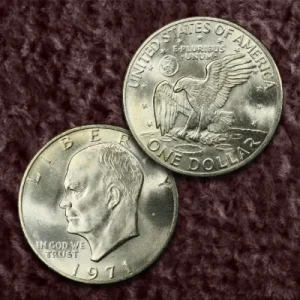
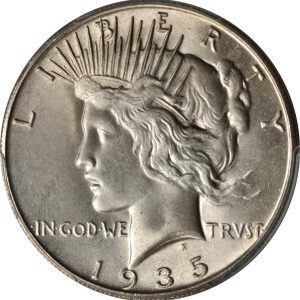
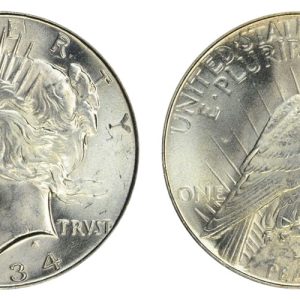
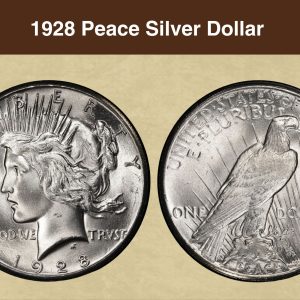
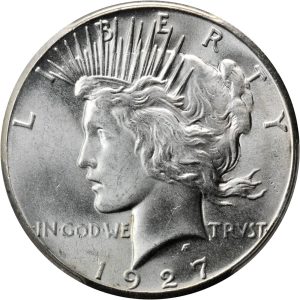
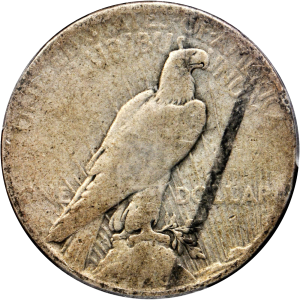
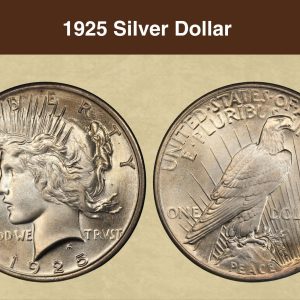
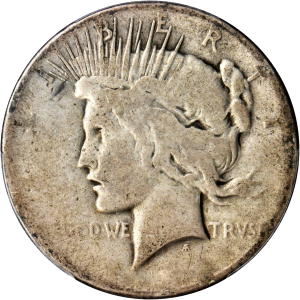
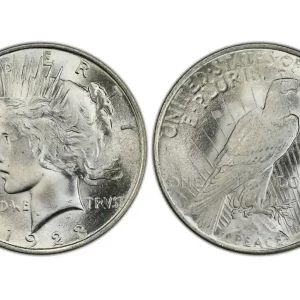
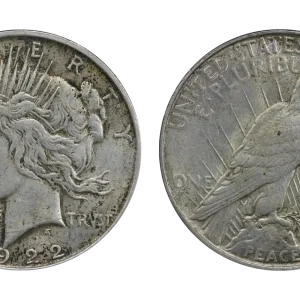
What makes a 1901 silver dollar rare?
A 1901 Morgan silver dollar is rare primarily because few have survived in high-grade condition due to heavy circulation and the 1918 Pittman Act, which led to many being melted down. While the Philadelphia Mint produced nearly 7 million, the vast majority were either put into circulation or melted, leaving very few in Mint State condition. The 1901-S version is also rare in uncirculated grades due to low mintage, though it is not as rare as the Philadelphia issue in high grades.
How much is a 1901 O Morgan Dollar worth?
Circulated condition: Expect to pay around $30 to $60 for a 1901-O Morgan silver dollar that shows signs of wear. Uncirculated condition: The value increases significantly for coins in uncirculated, or “mint state,” condition. A coin in a high grade can be worth several hundred dollars, with pristine examples reaching tens of thousands of dollars at auction. Factors influencing value: The specific grade of the coin, including factors like strike and surface preservation, is the most important…
How many 1901 O’Morgan Silver Dollars were minted?
The 1901-O Morgan Silver Dollar has a mintage of 13,320,000 coins, making it the highest mintage of any New Orleans Mint Morgan dollar, though these coins were largely stored by the U.S. Treasury until their release in the 1950s and 1960s, which made them common in both circulated and uncirculated grades.
Where is the mint mark on a 1901 silver dollar?
On a 1901 Morgan Silver Dollar, the mint mark is located on the reverse (back) side of the coin, below the wreath and above the letters “O” and “L” in the word “DOLLAR”. If there is no mint mark, the coin was minted in Philadelphia. If there is an “O,” it was minted in New Orleans; if there is an “S,” it was minted in San Francisco; and if there is a “CC,” it was minted in Carson City.